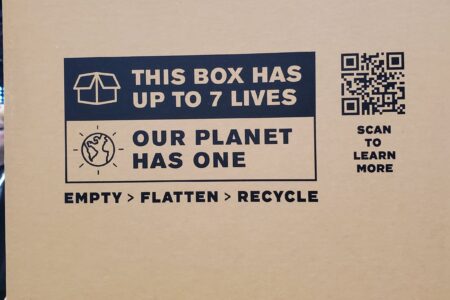A virtual and sustainable future at interpack 2023

Image: Kathryn Brand
This year’s interpack, which took place 4-10 May in Düsseldorf, Germany, was the first to be held in six years, and as a result, the show offered an array of trends and innovations within the packaging and processing industries, markedly more distinct and developed due to the longer gap, as well as of the industry- and culturally-altering effects of the Covid-19 pandemic. These main themes were that of digitalisation, automation and sustainability.
The first two were dramatically propelled forward because of the pandemic, as companies were forced to reimagine how they conducted business and how they could operate in safe and innovative ways. Rockwell Automation and tna solutions offered visitors to their stands the chance to experience their VR (virtual reality) technology. Rockwell Automations sat us down inside egg-shaped swivel chairs and placed a headset on us to talk through its Emulate3D digital twin software. You are transported to a factory floor with a range of production machinery, mirroring a real world set up. Customers can use this technology to trial machinery with their products before ordering, simulate how the equipment could work in their space and train employees on the systems without them even needing to be on the factory floor.
Similarly, tna’s entire presentation was in a virtual reality (or what they call Extended Reality or XR) scape, where we were guided by a virtual figure (that brought to mind the uncanny valley theory!) through its virtual factory, allowing customers, much like Rockwell, to commission, maintain and train workers on production lines. tna developed this technology during the Covid-19 lockdowns, as travel was dramatically restricted, as was in-person contact of any kind. A client of tna wanted to be able to remotely design production lines and test them with their product. This pressure encouraged companies like tna and Rockwell to rapidly develop what still seems like incredibly futuristic technology to enable connectivity and productivity despite such physical and logistical barriers.
Likewise with digitalisation, machine operators are now able to access and review production lines and equipment from a remote location, extracting and analysing the data to assess the machines efficiency and pre-empt any issues, so parts can be ordered, or maintenance can be scheduled ahead to reduce downtime and therefore increase productivity of a plant. With this knowledge, a machine can be relatively self-automated and switchover its own parts for format changes, as Sidel demonstrated with its new case packer at the show.
While Covid-related restrictions may have all but eased, workforce-related challenges are now driven by labour and skills shortages, particularly in Europe, and especially in the UK. The advancements in digitalisation but particularly VR technology can mitigate the disruption caused by this shortfall as workers need less training and experience as they can be talked through changeovers and maintenance by the virtual simulation. If the machine is automated, then it can also maintain or changeover itself, again requiring fewer or less trained workers on the factory floor.
With sustainability in mind, such developments can result in reduced travel necessities for customers in the design and development stages of machinery, as well as increased operating efficiency and reduced downtime, saving energy. Almost every company in attendance at interpack was eager to talk about sustainability, whether it be how their machinery is adapted to recyclable packaging materials, or how it is more energy efficient and therefore sustainable. Some made more tangible and impressive claims than others but all made claims, whether it be that they had reduced the plastic in their packaging by 10% or whether completely plastic free, as it is still such a buzz word that attracts every part of the supply chain.
Having not attended the interpack six years ago, it’s hard to say precisely how much automation, digitalisation and sustainability trends have developed or emerged since then. However much of the innovations felt in their relatively early stages, especially the VR, which was still only just being realised on a commercial level, so it will be interesting to see how much more widespread and developed these futuristic innovations will be in 2026.
- Kathryn Brand, associate editor, Tea & Coffee Trade Journal.
Keep in touch via email: [email protected] Twitter: @TCTradeJournal or LinkedIn: Tea & Coffee Trade Journal



